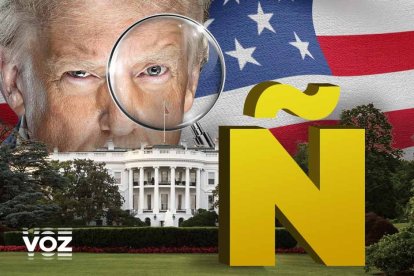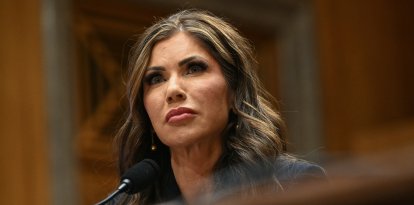Spanish under Trump's lens: What will happen to the language of 57 million Americans?
Donald Trump signed an executive order encouraging the establishment of English as the official language of the country, while the White House's Spanish-language website has been taken down.

Spanish removed from the White House website.
The United States is a graveyard of languages. This has been stated in many columns and reports analyzing the situation of foreign languages in a country that has primarily maintained English as its mother tongue.
"Graveyard" is not an exaggeration. Not one member of the televised Soprano family was able to string together two consecutive words in Italian. Mandarin and Cantonese also fail to stand out. These Chinese languages have a smaller number of speakers, with just a touch over 2 million in the country.
Spanish is the only language that has grown year after year, and exponentially, even above the immigration figures. However, after an election in which it became clear that the Republican Party is no longer that of the WASP electorate, President Donald Trump seems willing to go to battle against the language of Cervantes.
No official language until Trump
The United States, unlike most Western democracies, did not officially have a national language. Some states have English, along with other co-official languages, as their official language. This has been the case since the founding of the country and until March 1, when President Donald Trump signed an executive order to make English the official language of the federal government and the nation.
The president's executive order exempts federal agencies and institutions, as well as government-funded organizations, from offering translated alternatives to English in their content, procedures or any public-facing management. It thus reverses an order from former President Clinton which forced agencies to provide services in languages other than English.
For Donald Trump, this is a way of bringing cohesion to American society. "Establishing English as the official language will not only streamline communication but also reinforce shared national values, and create a more cohesive and efficient society," reads the executive order signed last Saturday.
Sparks fly in Spain
This is not everyone's opinion. The Instituto Cervantes, a Spanish governmental organization that defends the use and learning of the language around the world, harshly criticized Donald Trump's decision. The criticism not only came over the latest executive order, but also for the elimination of the Spanish version of the White House website.
Luis García Montero, director of the Instituto Cervantes and poet with a career linked to the Spanish left, argued that the federal government's decision forgets that "it is not only about defending the prestige of the language, but also about not humiliating people for being migrants or poor."
The statements from the head of the Spanish language institution were said before King Felipe VI of Spain, who in a more conciliatory tone said he was surprised by the absence of a website in Spanish. "Surely it will be temporary, because by force of the demographic and democratic facts it will end up being the second most used language and with political influence," said the monarch in February.
Spanish spoken by 14% of the population
In addition, it is estimated that around 8 million students are learning Spanish in the United States, reflecting its growing importance in education.
In terms of language proficiency, 71.6% of the Hispanic population spoke Spanish at home in 2017, according to the U.S. Census Bureau.
However, it is important to note that while many Spanish speakers are bilingual, there is a significant proportion who have limited English proficiency, which can affect their access to services and opportunities.
Geographically, the states with the highest percentage of Spanish speakers include Texas, where 12% of residents use Spanish at home and have English proficiency below "very good," followed by California (11.9%) and Florida (9.2%).
For the Hispanic Council, a think tank dedicated to the Hispanic presence in the United States, Donald Trump's decision is "symbolic." Andrés Laguna Martino, coordinator and spokesman for the organization assured VOZ that the executive order is "in tune with President Trump's discourse of appealing to and defending traditional American values."
And if such a decision is symbolic, it is because the Hispanic identity is not yet anchored to U.S. institutional culture, which still leaves a lot of work for Spanish-language advocacy groups. Andrés Laguna and the Hispanic Council lament that this is the case. Hispanic culture has a foundational role in the United States, and current data on Spanish usage supports this claim. "More than 90% of schools, administered at the local level, have Spanish programs and there are more than 8 million Spanish students throughout the territory," recalls Laguna, who says that despite the executive order, Spanish "is in very good health in the United States."
With this data, it is difficult to imagine a future in the country without Spanish, despite the symbolic importance of Trump's order. It could hinder legal processes for immigrants who do not fully speak the language, but it will likely not slow down the language's progress, especially in the private lives of each family. Laguna Martino estimates that "71% of Hispanics use Spanish to communicate in the family environment."
"Spanish will not stop being spoken in the United States. We are convinced that it will continue to be a functional language in the United States in political, commercial, diplomatic and social spheres," concludes the expert.
RECOMMENDATION





















